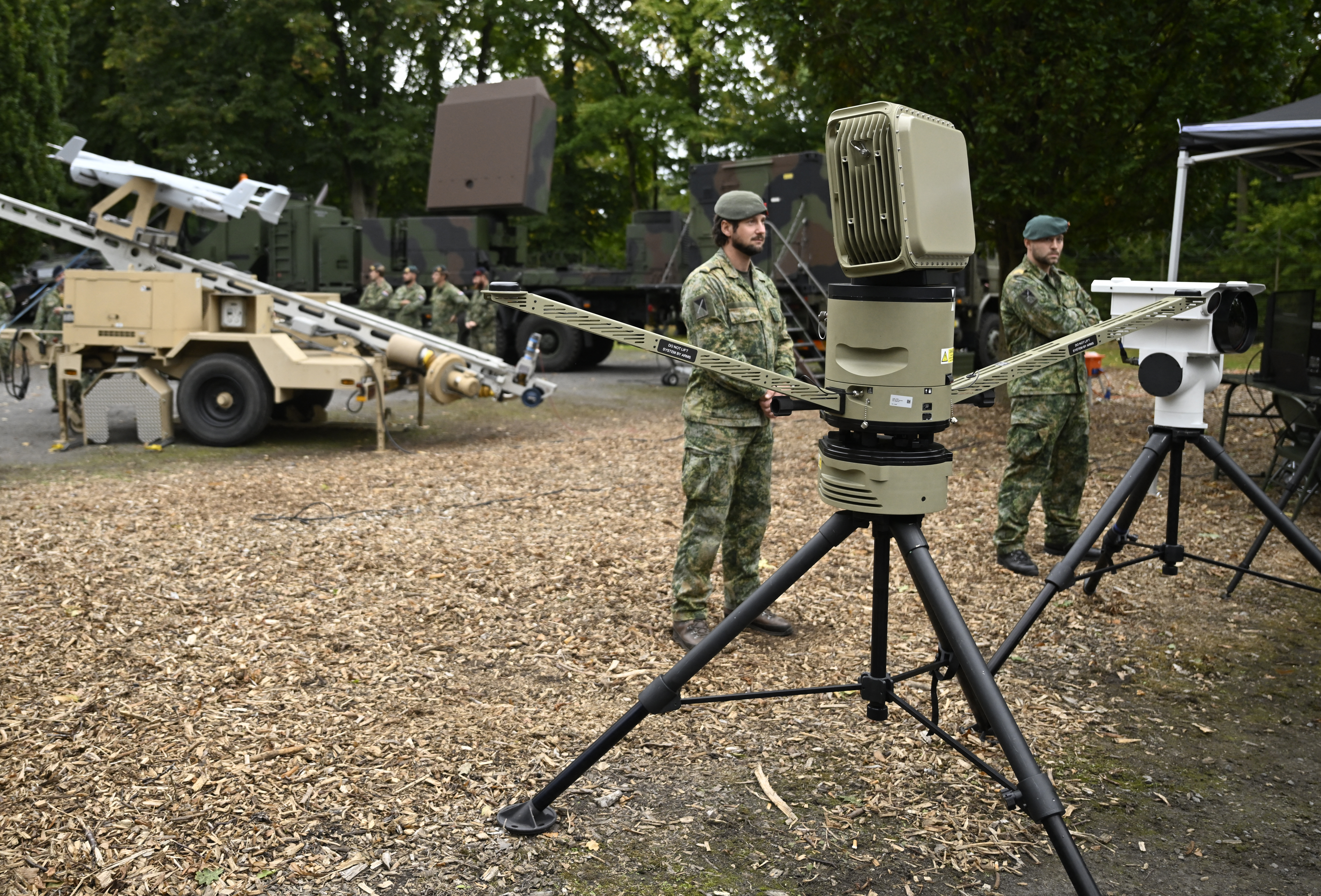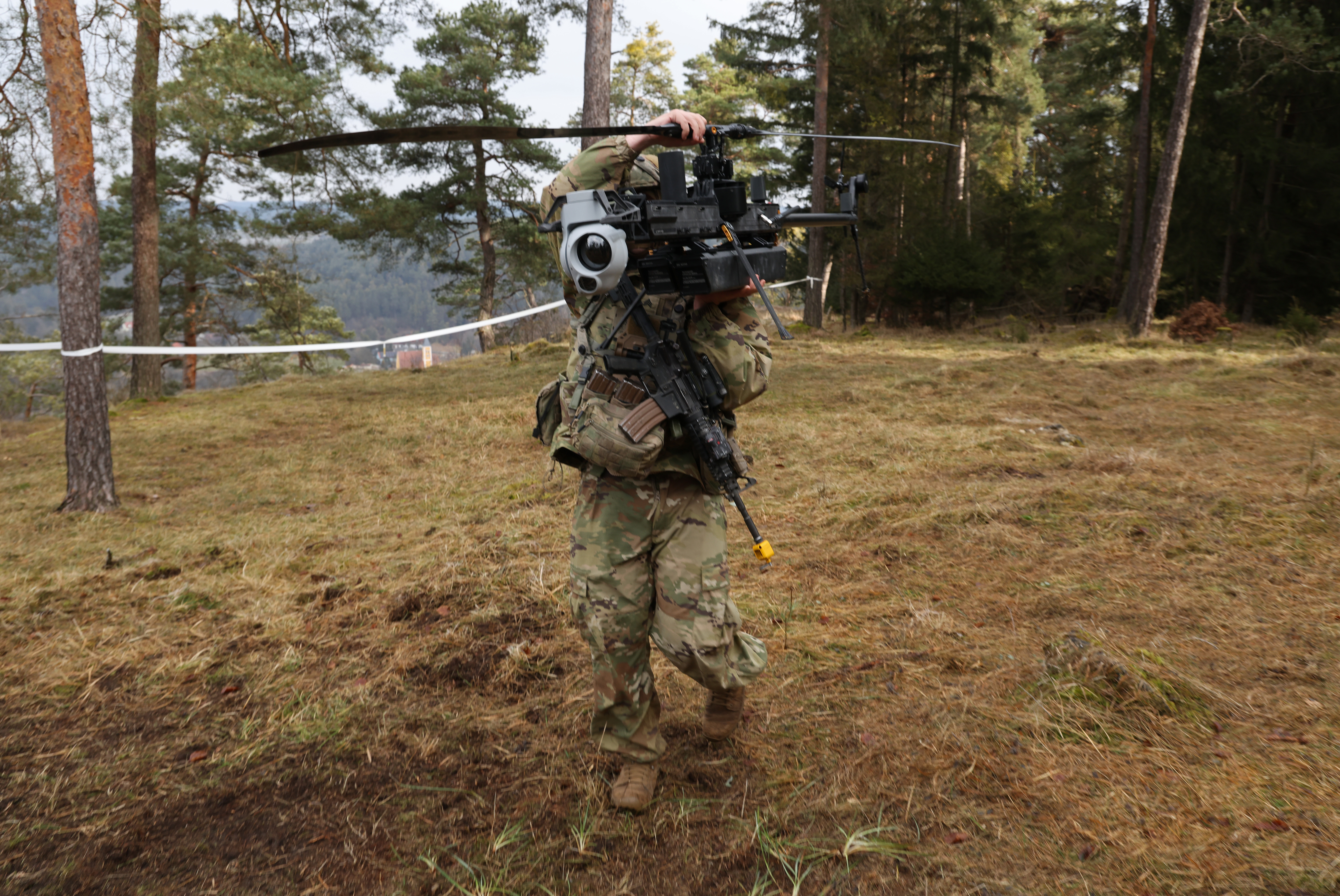
The White House this week formally tapped the Space Force’s No. 2 officer to oversee the sweeping Golden Dome missile defense project.
Gen. Michael A. Guetlein, the vice chief of space operations, is nominated to take on the role of “direct reporting program manager” for Golden Dome, the Pentagon announced June 18. A June 16 notice in the Congressional Record indicated Guetlein would be reassigned but did not specify his new job.
President Donald Trump announced Guetlein would run the Golden Dome program at a White House press conference last month.
Golden Dome is envisioned as a massive network of sensors, interceptor weapons, and electronic-attack tools that—like its inspiration, Israel’s Iron Dome—would protect the United States from ballistic and cruise missiles. Trump is pushing for the project to become operational by the end of his term in 2029, a goal defense experts say is unlikely.
Guetlein will be tasked with pulling together existing military systems—relying heavily on the military space enterprise that the four-star has helped build—and fielding new ones to track, warn of, and disable or destroy incoming missiles, similar to the Reagan-era “Star Wars” initiative that failed to come to fruition.
Such an enterprise would cost hundreds of billions of dollars to develop and launch. Trump has projected a $175 billion price tag, while an independent estimate pegged the cost of space-based missile interceptors alone at more than $542 billion over 20 years.
Guetlein, who has likened Golden Dome’s scope to the Manhattan Project that developed America’s first nuclear weapons, is no stranger to major acquisition initiatives. The general led the Space Force’s acquisition branch, Space Systems Command, for two years following stints as deputy director of the National Reconnaissance Office and a program executive at the Missile Defense Agency.
He’ll become the face of one of Trump’s top defense priorities, particularly as the administration looks to jumpstart its progress with a $25 billion infusion of funds through the massive GOP-led spending package under consideration on Capitol Hill. It’s unclear how much money the Pentagon is seeking for Golden Dome in total next year.
Republicans and Democrats alike have criticized the Trump administration for seeking billions of dollars to fund Golden Dome in 2026 with few details of how it would spend that money.
“We still haven’t seen a clear definition of what it is,” Rep. Ken Calvert (R-Calif.), who chairs the House Appropriations Committee’s defense panel, said June 10. He questioned how Golden Dome would protect the continental U.S., as well as Hawaii and Alaska, without “spending a lot of money unnecessarily.”
Over the course of several recent congressional hearings, lawmakers and defense officials have begun piecing together a clearer picture of how Golden Dome might work. Air Force and Space Force leaders expect their services will play a significant part in bringing Golden Dome to life.
Gen. Chance Saltzman, the Space Force’s top officer, told House lawmakers June 5 Golden Dome will spur the service to take on requirements for missions that have never been accomplished by a military space organization. He expects leaders will lay the “foundational groundwork” for Golden Dome by the end of September, noting that the Space Force is already discussing how to integrate its systems with other military services and agencies.
Defense officials have floated several ideas of existing and future technologies that could become part of Golden Dome.
Plugged into that network could be heat-seeking sensors and artificial intelligence-powered targeting tools; Northrop Grumman’s Hypersonic and Ballistic Tracking Space Sensor Satellites that are designed to follow low-flying, fast-moving weapons; and undersea submarine-tracking sensors, among other equipment, military officials told lawmakers.
“I think that it’s a seabed-to-space approach,” said U.S. Northern Command boss Gen. Gregory M. Guillot, who is also the country’s top homeland defense officer as head of the North American Aerospace Defense Command (NORAD).
“We need to have undersea sensors to detect submarines that can now get closer to North America than they could before based on improved stealthiness of those ships,” he told senators May 13. “Then a ground layer that can see much further out because of the advanced standoff weapons that our adversaries can now employ.”
Then add an air layer, like the E-7 Wedgetail airborne target-tracking plane, and a space layer, he said. The Pentagon has indicated it will abandon the Air Force’s plan to buy a fleet of Wedgetails in favor of eventually relying on satellites to track airborne targets—an approach critics say would leave the U.S. military far short of the aircraft- and missile-tracking capabilities it needs until those space assets are ready.
“I suspect that [Golden Dome] would be able to use a lot of the systems that are already in place and currently in development, which would give us a full capability in probably something closer to zero to five years, as opposed to something a decade out into the future,” Guillot said.
The project will also require a buildup of radars and military communications infrastructure around population centers and defense sites, Sen. Mike Rounds (R-S.D.) added June 18 at a Senate Armed Services Committee hearing on the 2026 defense budget.
Air Force Chief of Staff Gen. David W. Allvin cautioned that the whole Golden Dome enterprise—from the sensors that see an enemy strike to the software that processes reconnaissance images and the weapons that neutralize a threat—”all has to be stitched together.” The service has struggled to network its own sensors and shooters as an alternative to jet-based battle management over the past several years.
“We’re doing the mission analysis,” Allvin said at the June 5 House Armed Services Committee hearing on the Department of the Air Force’s budget request. “Which systems are required . . . so we can move data to the right places and most effectively orchestrate a very complex mission set?”
While Saltzman said at the June 5 hearing it’s too early in that analysis to know whether Golden Dome would protect the U.S. from bomb-laden small drones like those that attacked Russian bomber aircraft earlier this month, Defense Secretary Pete Hegseth told lawmakers a few days later that the Pentagon’s 2026 budget request includes “robust increases” in hypersonic weapons, drones and counter-drone technology, and surveillance tools that could become part of Golden Dome.
Chairman of the Joint Chiefs of Staff Gen. Dan Caine told House lawmakers June 12 that the Defense Department is looking at ballistic missile defenses like the Army’s Terminal High-Altitude Area Defense system and the Navy’s Aegis Ashore system to ensure they can connect to offer all-encompassing protection without any gaps.
Among the biggest lessons the U.S. can adopt from Iron Dome is Israel’s insistence on plug-and-play technology—unlike America’s bespoke systems that often need modifications or add-ons to talk to other military equipment.
“You cannot even sell a system to the Israeli military . . . that is not open architecture, that will not work with the rest of their systems, so you don’t end up with a proprietary system that’s standalone,” U.S. Central Command boss Gen. Michael E. Kurilla told HASC June 10. “We need systems that can integrate and all talk to each other.”
A spokesperson for the Senate Armed Services Committee did not answer June 18 when the panel might consider Guetlein’s nomination.
If Guetlein is confirmed, his departure from Space Force leadership would leave the Air Force and Space Force without Senate-approved vice chiefs. Trump fired Air Force Vice Chief of Staff Gen. Jim Slife in February’s purge of top brass that also included the ousters of Chairman of the Joint Chiefs of Staff Gen. CQ Brown Jr. and Chief of Naval Operations Adm. Lisa Franchetti.
Hegseth said at the time the firings sought to “focus our military on its core mission of deterring, fighting and winning wars.”
The post Trump Formally Nominates Guetlein as Golden Dome Czar appeared first on Air & Space Forces Magazine.

Air, Missile Warning & Defense, Space, Donald Trump, Gen. Michael A. Guetlein, golden dome, missile defense, Nominations
Air & Space Forces Magazine
[crypto-donation-box type=”tabular” show-coin=”all”]






